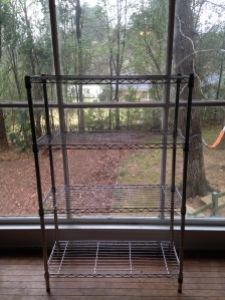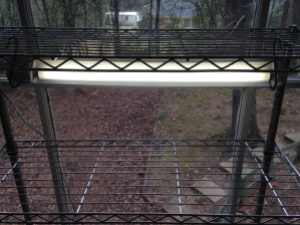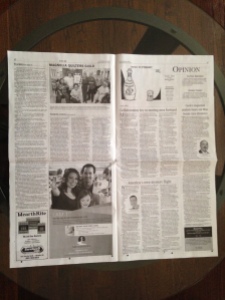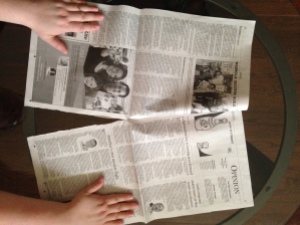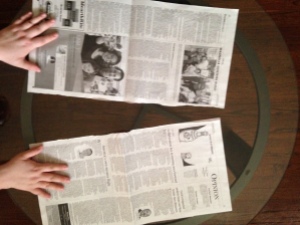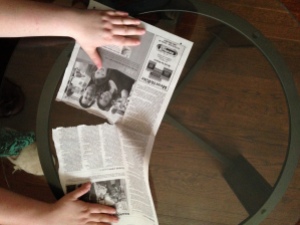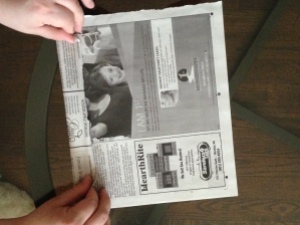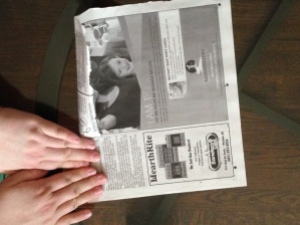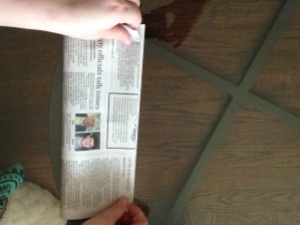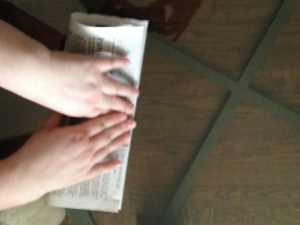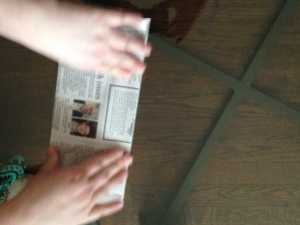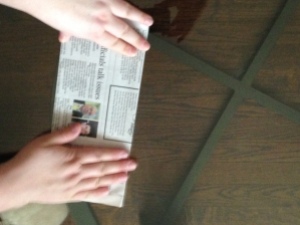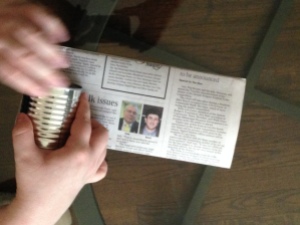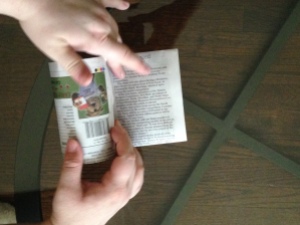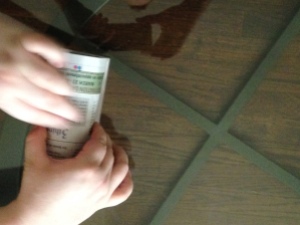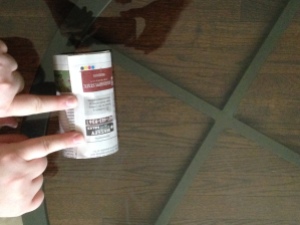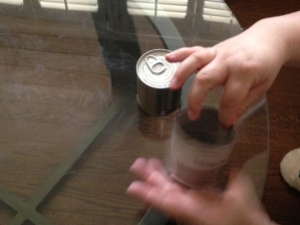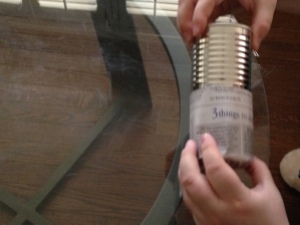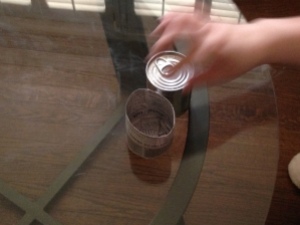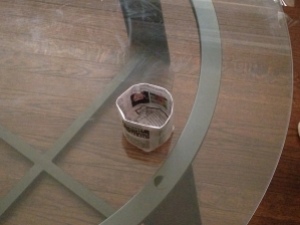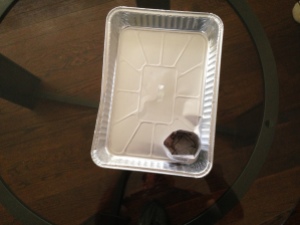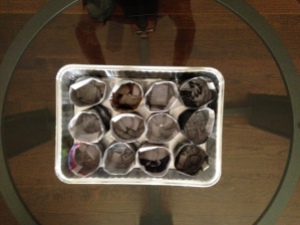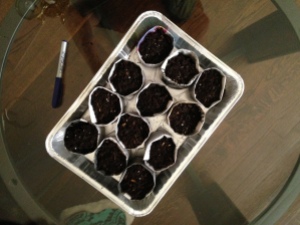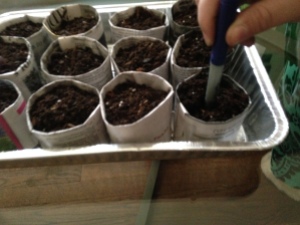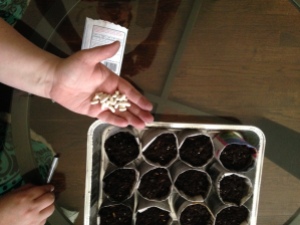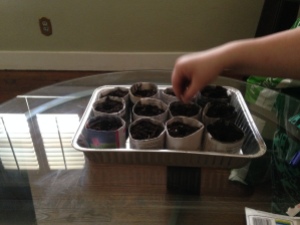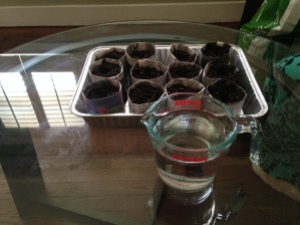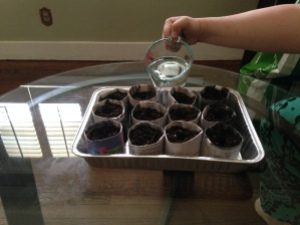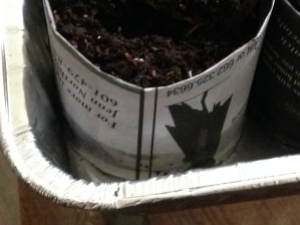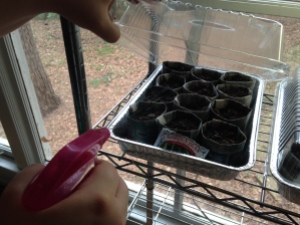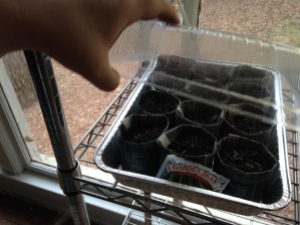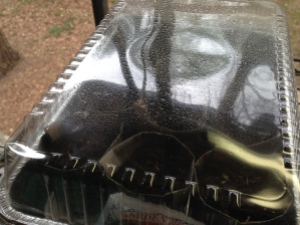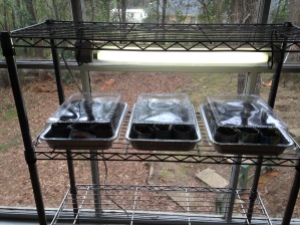Good afternoon, fellow gardeners! Today, I wanted to bring you the second installment of my Homegrown Savings Series, How To Garden On A Budget, Part II! If you need a to take a look at part I, click here. Today, I am going to show you how I started my indoor greenhouse area for my seedlings, which will make up my various summer and fall gardens this year; this series will span 16 weeks so please check back each Sunday!
Step 1: I purchased my green shelves from Walmart for 12.98 each! The shelves are simple to put together, and are light enough I can carry them loaded with plants by myself. The shelves are placed in front of my dining room windows, without any window coverings to maximize light and promote seed germination. As a side note, I am redecorating my dining room and that’s why it looks so empty!
Step 2: Install Lighting. I add greenhouse lighting by hanging fluorescent under cabinet light strips, purchased at Walmart for $5.98 each, by 4 inch s-hook, below each shelf. I plug each light into a surge protector, which is plugged into the wall. The seedlings will needs the light strips turned on for 16 hours a day, turning them off at night, when I go to bed, and back on in the morning when I begin my day.
Step 3: Creating mini-greenhouse stations. I find that growing my own seedlings works best for both my desire to organically produce frosh pesticide-free produce for my family, as well as my need to stay with my budget for my envelope savings system monthly budget. With that said, I produce my own garden plants by creating mini-indoor greenhouses! I start by using disposable covered baking pans from the Dollar Tree, which come in a 2-pack for $1.00.
Step 3: Create seed pots. I use newspaper to create my seedling pots, which is an awesome savings, as seedling pots cost $3.98 for 12 at my local Walmart, and I make mine for free using recycled newspaper; as well, my local newspaper uses soy ink, so the ink will not be toxic to my germinating seeds. Below I will show you the steps to create my pots.
First, gather a sheet of newspaper, laid fully flat, on a flat surface.
Next, split your sheet of newspaper in half, along the crease.
Then, tear the half sheets in half again, creating quart-size pages.
Next, fold an one inch section, away from you, of the quarter sheet; be sure to crease the page once folded over.
Next, fold the sheet in half, lengthwise again; again making sure to crease your line. Then flip your sheet over and fold the uneven edge one inch up, away from you; be sure to crease that fold as well.
Now you will need a can; I use a small aluminum can. Take your sheet, place you can on one end of the sheet, making sure to align the end of the paper, one inch down the can, with the crease in the fold, and then roll the paper around the can. At this point, secure your can roll with a piece of tape, along the lose seem, and I used packaging tape; it was a couponed freebie!
Now, you will need to flip your can over, and secure your seedling cup bottom with another piece of tape. Now, invert your can and in a circular motion, loosen your cup away from the can, sliding in a spiral motion down, until the cup comes fully away from the can. At this point, fold a 1/2 inch section of the top rim of the cup into itself, creating a smooth, rimmed edge.
Repeat these steps, creating a total of 12 cups. Take the 12 cups and place them into the cake pans.
Step 4: Planting Your Seeds. For this step you will plant your seeds for germination; I used seeds from my local Dollar Tree, which to my surprise were non-GMO seeds, and many varieties were heirloom quality as well. You will need to purchase a potting soil mix, or make your own; I will be posting this week a recipe to make your own, but for this tray I used a commercial blend soil. When filling your cups, you will then fill your cups with a basic, light potting soil mix, leaving 1/2 inch space from the top of the cup.
Next, take a sharpie marker and punch holes in the soil of each cup, making sure to go 1 inch down. Then place on seed in each hole, in each up, then re-cover with soil mix.
Step 5: Watering your cups. You will then need to saturate the cups. You will do this by placing 2 cups of lukewarm water in the bottom of each tray; the water will be absorbed within 5 minutes. The water will be absorbed up the newspaper cups. This is very interesting to watch! Also, do not be concerned of mold or rot, as the water being poured into the tray will help keep the seeds moist, but not damp.
Next, move your tray to your shelving unit. Next, using a clean spray bottle, mist the tops of your cups, with an even mist for 30 second, or until thoroughly wet. A tip is to tilt the plastic cover top, backwards away from the shelf, at an angle, to prevent the mist from touching your lighting. Then place the packet cover, indicating which seeds you planted, on the side of each tray, and then firmly secure the plastic cover to your tray. Condensation will form on the tops of the trays, but this is normal, and precisely what you are aiming for; remember you are recreating the greenhouse effect, indoors!
Step 6: Repeat the above, until all of your shelves are full. As well, please note that seeds will need to be misted daily, for a full 30 seconds a tray.
Please stay turned as next Sunday I will unveil my full shelves, and the next steps towards my budget-friendly gardening system!

